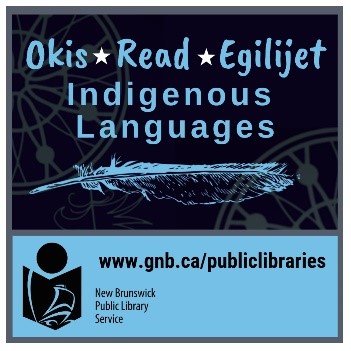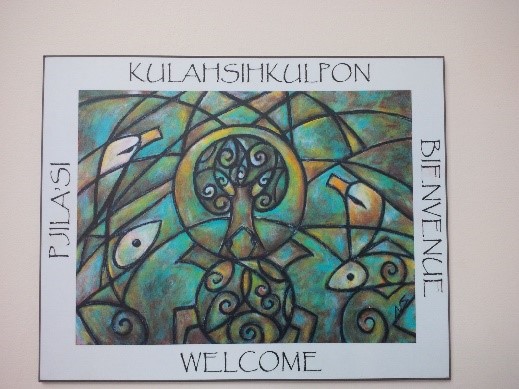Recognising and Promoting Indigenous Languages in New Brunswick, Canada
01 October 2019
Our latest profile of a library offering dedicated services around indigenous languages and the communities that speak them comes from Patricia Knockwood, Indigenous Services Librarian at New Brunswick Public Library Service, Canada.
New Brunswick Public Library Service (NBPLS) provides library services within the traditional territories of the Peskotomuhkati, Mi’kmaq and Wolastoqiyik. It consists of a network of 64 public libraries, an online branch and a provincial library services-by-mail.

New Brunswick (NB) public libraries are unique in Canada as library services are free to all residents of the province, which includes First Nations. In addition, of the 15 First Nation communities, only one is more than 20 kilometres from an existing public library.
The Mi’kmaq and Wolastoqey-Peskotomuhkati languages are part of the Algonquian language family. As of the 2016 Census, there are 8,870 Mi’kmaq and 350 Wolastoqey-Peskotomuhkati speakers. Within the Atlantic Provinces of Canada, language revitalization efforts are being carried out done via methods like immersion programs, books published in the languages, and applications.
 With the aid of our Indigenous Services librarian, NB public libraries have been incorporating Mi’kmaq and Peskotomuhkati-Wolastoqey languages into library spaces, collections and services. For example:
With the aid of our Indigenous Services librarian, NB public libraries have been incorporating Mi’kmaq and Peskotomuhkati-Wolastoqey languages into library spaces, collections and services. For example:
- Every public library entrance has a “Kulahsikulpon Pjila’si Welcome Bienvenue” sign that features artwork by Wolastoqiyik artist Samaqani Cocahq (Natalie Sappier).
- Public library communications respect local Indigenous peoples and languages by using their words for their people and language rather than using the colonialized names.
- The provincial online catalogue provides a featured search to easily find materials written in Mi’kmaq and Peskotomuhkati- Wolastoqey.
- Every public library provides access to Indigenous language materials for loan with a strong focus on Mi’kmaq and Peskotomuhkati-Wolastoqey languages. These include titles published by New Brunswick First Nation education groups.
- Public libraries promote Indigenous language materials via social media.
- Some public libraries have worked with their municipalities to include the local indigenous language term for welcome on the library’s exterior signage.
- Indigenous languages are incorporated into public library programs. Recently, the provincial Summer Reading Club program featured a main character of a lobster whose name was Jakej (pronounced ja-getch), the Mi’kmaq word for Lobster. Other examples include: bilingual story times, word matching games, film screenings, and basic language learning sessions for the general public.
- NB public libraries offer a printed brochure in Mi’kmaq and Peskotomuhkati-Wolastoqey, English and French languages.
- Library staff have a glossary of key words (i.e. welcome, library, read, and book) in Mi’kmaq and Peskotomuhkati-Wolastoqey languages that they can use when planning activities and events.
- Public libraries are promoting International Year of Indigenous Languages through such activities as multilingual story times, collection displays, guest speakers, and film screenings.
NB public libraries have a strategic plan for Indigenous library services that can be accessed here. Future initiatives include promotion of language learning apps and exploring ways of further incorporating Indigenous languages into library space.
Find out more about what libraries are doing to support indigenous languages and the communities that speak them.